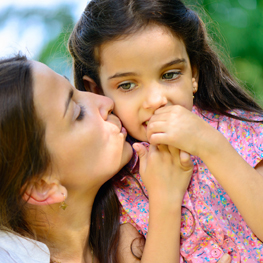
Anxiety is an emotional state that is often most closely related to fear. It is a feeling of threat to one’s safety or well-being, even when there is no immediate danger; however, the feeling is still real. Anxiety can appear when anticipating something that feels frightening and may or may not happen in the future. Anxiety lands in-between now and the future. Most people, from children to elderlies, experience anxiety at some stage of their life, which is normal.
What causes anxiety?
Children can go through phases of fear and anxiety through their growth. Babies grab on to their parents when facing ‘scary’ strangers. Toddlers are battling separation anxiety when a parent is attempting to sneak out of their sight. Children between the ages of four to six can feel fear and anxiety about ghosts, darkness, monsters, insects and so on. Children may also feel anxious about being left alone, new situations or fears about not succeeding in their tasks. Also, major life changes like a new sibling, moving houses, loss of a loved one or parent’s separation can bring into surface
a variety of fears to be dealt with.
What are the symptoms of anxiety?
Anxiety may cause physical symptoms like wobbly legs, cramps or a butterfly sensation in the tummy, nausea, racing heart, sweaty hands, shallow breathing, a tense neck or a feeling of light headedness. A child’s behavior may also change. Some become more cautious, reserved, clingy, impulsive or vague. Sleeping disturbances or avoidance to enter new situations may also occur. Children have different temperaments and coping mechanisms, and they react differently to fear and anxiety.
Here are a few practical tools that will help you to assist your child to relax and feel more secure:
Acknowledge your child’s feelings. As unreal as the reason for anxiety may seem to you, it is a real feeling for your child. Instead of belittling their reaction, take the time to sit down and have a chat about what they are going through. Ask your child how are they feeling? What might have caused it? What would help them to overcome their fear? Children are surprisingly in tune and resourceful. Tell them that they are safe and that you will help them with this emotion.
Teach breathing. Calming their breathing will ease the anxiety. Help your child to recognize their breathing by asking them to place their hand on their tummy. Now ask them to notice what happens to their tummy when they breathe in and breathe out? Do this exercise together, which will help both of you to ground and calm. Take a deep breath all the way down to the belly, so that your belly inflates like a big balloon and by exhaling it, deflates into a pancake. Keep your shoulders down and relaxed. Continue 10 more breaths and feel your heart settle back to a normal rhythm.
Relaxation technique. Invite your child on an imaginary trip by helping them to visualize a sensation
of relaxation.
In a peaceful room, cover your child’s body with a blanket and talk them through the following steps:
Close your eyes and take a few big breaths. Now find a place or person in your mind that makes you feel safe and warm. It might be a place in nature or the company of some secure person in their life. Ask them to breathe in that feeling of safety. With every breath, that feeling will flow through their body. You can list their body parts from top to bottom while you guide them.
Ask them to visualize that soothing feeling of safety traveling through their whole body, then bursting out from the tips of their toes and surrounding them in a calm cocoon. Remind them that this cocoon is around them all the time, keeping them safe.
Calming touch. Caring touch will help your child to feel more connected with themselves and will ground them in their body. Nurturing and calming touch can soothe the nervous system by increasing the feeling of safety and reducing the anxiety. First, calm yourself down by taking a deep breath. Then place your right hand gently on their heart and left hand at the same height on their back. With the same rhythm, slowly massage tiny circles in a clockwise direction on your child’s chest and back to calm their bouncing heart. You can repeat the same movement on their tummy too.
Feel free to choose the tool that most resonates with you and your child, and take it as part of your everyday life. This way, your child will get familiar with the practice and learn to use the tool to self-regulate their feelings. By doing these little exercises together, you will both learn to relax and also reconnect with each other.
Carita Viklund is a Finnish Family Therapist. She works with children and families by providing them with practical tools to support their mental and emotional well-being.
Calgary’s Child Magazine © 2024 Calgary’s Child